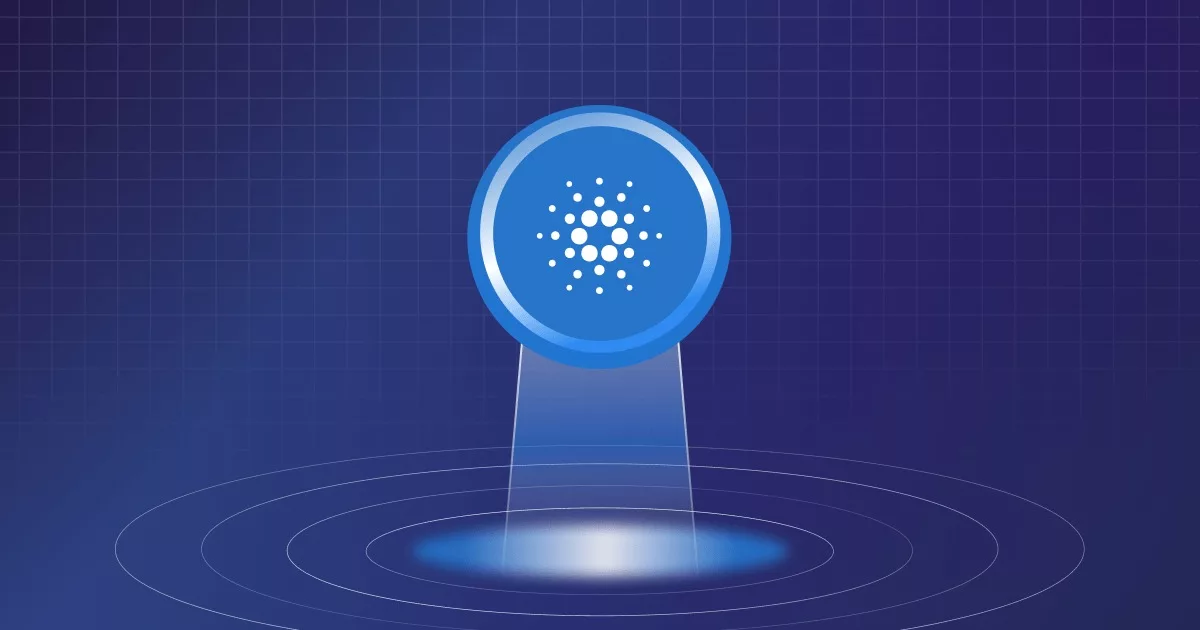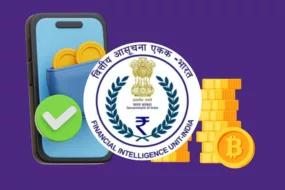
Cardano, dubbed the “Ethereum Killer,” boasts a unique approach to its development. Its academic rigor, dating back to its inception, sets it apart from other blockchain projects in the crowded crypto market.
Charles Hopkinson, the co-founder of Ethereum, founded Cardano in 2017 after a disagreement with Vitalik Buterin about the future roadmap of Ethereum. This move was an attempt to address the limitations of Ethereum and bring a more scalable and sustainable blockchain network to the forefront.
Now the question arises, will Cardano be able to cut through the noise and gain the anticipated user adoption?
Only time will tell if this blockchain project will emerge as a winner in the fiercely competitive crypto market.
What is Cardano?
Cardano is a decentralized, proof of stake (PoS) blockchain platform powered by its native cryptocurrency ADA. IOHK, Cardano Foundation, and EMURGO are handling its development.
It can also be referred to as a third-generation blockchain (or Blockchain 3.0) aiming to solve the scalability issues inherent to the first and second generations.
It is the first-ever blockchain platform founded on peer-reviewed research and evidence-based methods. The team behind the project has published over 90 whitepapers for the underlying technology.
Like its competitor Ethereum, Cardano aims to enable the developer communities to build decentralized applications (dApps) through its smart contract functionality.
What is ADA Token?
ADA is the native cryptocurrency of the Cardano blockchain, named after a 19th-century English mathematician called Ada Lovelace. It is one of the top cryptos by market capitalization (USD 13 Billion as of March 2023), with a max supply of 45 Billion ADA.
Primarily, ADA is used to pay transaction fees for using the Cardano platform and is distributed to the validators as rewards for running the network.
Also, it acts as a governance token, enabling its holders to vote on the changes and upgrades required for the project.
Storage of ADA
When it comes to storage, ADA can be stored in multiple ways,
1. Full Node Wallet
The Cardano blockchain must be downloaded to use Full Node Wallet. Each transaction is verified for maximum user security. For example, Daedalus.
2. Light Wallets
There is no need to download the blockchain using a Light wallet. For example, Yoroi and AdaLite.
3. Cold Wallets
These are Hardware wallets. For example, Ledger and Trezor.
Staking of ADA
Users can stake their cryptos in the pool to earn ADA rewards. Full nodes (Daedalus) or light wallets (Yoroi) can be used for staking ADA tokens.
Light wallets are suitable for beginners as they are installed in web browsers (like Google Chrome). On the other hand, full node wallets are targeted at more advanced users and can be downloaded onto the desktop. Both wallets follow the same process for staking ADA tokens.
Let’s take the Yoroi wallet as an example.
Step #1: After downloading the Yoroi wallet, click the browser extension.
Step #2: Go to the Yoroi dashboard and select the “delegation list” tab to find the staking pool list.
Step #3: The user can pick a suitable pool based on various parameters (including Costs, Share/Pool size, Blocks, Return on Assets, etc.).
Step #4: After selecting the pool, the user can click the delegate button to stake ADA tokens.
Step #5: The user must pay a fee via the wallet to complete the staking process.
Working Mechanism
Traditional payment companies like VISA reportedly handle an average of 1,736 transactions per second (TPS) with the capability of dealing with up to 24,000 TPS.
Thus, Cardano strives to increase the network’s throughput in several ways — Consensus Mechanism, Layer 2 Scaling Solution, and Multi-layered operation.
1. Consensus Mechanism
Cardano validates the transactions with a Proof of Stake method called Ouroboros. In PoS, the network participants must stake and pledge their crypto tokens to the respective blockchain to set up their network node and become validators to verify the transactions.
Ouroboros selects a validator node based on the amount of ADA tokens staked and the length of time invested. The more ADA tokens staked, the more likely to be chosen. The selected node validates transactions, creates blocks, and adds the newly created blocks to the Cardano blockchain. Only a few ADA holders must be online and maintain good network connectivity.
This approach consumes lesser energy making it a sustainable platform.
2. Layer 2 Scaling Solution
Cardano’s layer 2 scaling solution, Hydra, is named after the mythical creature of the same name. Hydra sits on top of the Cardano platform, aiming to increase Cardano’s working speed.
3. Multi-layered Blockchain
The Cardano blockchain is divided into Cardano Computing Layer (CCL) and Cardano Settlement Layer (CSL).
CCL is responsible for handling all the computation for dApps running on the blockchain with the help of smart contracts. CSL contains the ledger where the Ouroboros consensus mechanism validates the transactions.
Key Features
First, let us dive into the positive aspects of the Cardano project.
1. Intense Academic Research
While a strong team does not back a significant portion of the crypto projects, Cardano is being developed through peer-reviewed research by a multidisciplinary team of professionals, including mathematicians, scientists, engineers, etc.,
2. Energy Efficient
Using the PoS protocol, Cardano consumes lesser energy than Bitcoin.
3. Scalability
Cardano can handle up to 2 Million tps through Hydra.
Limitations
Below are some of the issues with the Cardano project.
1. Slow Progress
Though launched in 2017, Cardano took around four years to introduce the smart contract functionality. Other competitors like Ethereum and Solana capture the market share quicker than Cardano. Ethereum has established itself as the go-to blockchain dApps development.
Also, it wasn’t until March 2020 that Solana’s first block was created. However, it outperformed Cardano by becoming a leading competitor to Ethereum, with numerous projects built over its network.
2. Competition from Ethereum
Ethereum acts as a start-up relying on agility and market feedback. But Cardano functions as an academic institution depending on intense research. Though a solid team backs Cardano, Ethereum’s long track record makes it the first choice for developers.
Use Cases
Cardano has positioned itself as a replacement for the Ethereum blockchain by providing a highly scalable solution and smart contract functionalities.
Traceability and identity management are the prominent use cases of Cardano. Atala is the enterprise solution division of IOHK, offering three products — SCAN, TRACE, and PRISM.
Atala SCAN and TRACE track the supply chain journey of products. PRISM offers identity management solutions. Cardano has partnered with the Ethiopian Government to provide blockchain-based IDs to record and track academic data on Cardano. Similarly, Cardano is working with other organizations like Veritree and DISH Network to provide digital identity services.
While Ethereum is known for supporting decentralized consumer applications, Cardano enables the development of enterprise-level dApps. There are over 2000 projects and dApps being built on the Cardano blockchain.
Also, Cardano aims to bank the world’s unbanked population.
Future Roadmap
Various functionalities of Cardano are being released in a phase-by-phase manner.
The entire roadmap of Cardano can be divided into five different phases or eras, each focusing on a particular feature, as mentioned below.
- Byron era refers to the network launch and introduction of essential features like transferring ADA tokens.
- Shelley era refers to the 2020 hard fork introducing PoS protocol into the network and paving the way for decentralization.
- Goguen era offered smart contract functionality in 2021.
- The Basho era is the current phase of Cardano reaching up to 2 million tps through its Layer 2 Scaling Solution Hydra.
- Voltaire era is the final phase and will introduce a treasury system enabling governance.
These functionalities are developed by keeping Security, Scalability, and Interoperability as their underlying design principles.
Conclusion
Cardano is a third-generation decentralized blockchain network. It is a promising project in the world of blockchain technology, offering unique features that address some of the limitations of earlier generations.
With a focus on scalability, sustainability, and interoperability, it aims to create a highly efficient and decentralized network suitable for enterprise-level dApps.
Cardano’s academic rigor, combined with the experience of its founder Charles Hopkinson, gives it a strong foundation for success.
While it remains to be seen if Cardano will achieve the anticipated user adoption in the crowded crypto market, its innovative approach to blockchain technology makes it a project worth keeping an eye on.
FAQs
1. What is Cardano?
Cardano is a decentralized, proof of stake (PoS) blockchain platform powered by its native cryptocurrency ADA. IOHK, Cardano Foundation, and EMURGO are handling its development.
It can also be referred to as a third-generation blockchain (or Blockchain 3.0) aiming to solve the scalability issues inherent to the first and second generations.
It is the first-ever blockchain platform founded on peer-reviewed research and evidence-based methods. The team behind the project has published over 90 whitepapers for the underlying technology.
2. What is ADA token?
ADA is the native cryptocurrency of the Cardano blockchain, named after a 19th-century English mathematician called Ada Lovelace. It is one of the top cryptos by market capitalization (USD 13 Billion), with a max supply of 45 Billion ADA.
Primarily, ADA is used to pay transaction fees for using the Cardano platform and is distributed to the validators as rewards for running the network.
Also, it acts as a governance token, enabling its holders to vote on the changes and upgrades required for the project.
3. How can I store ADA tokens?
When it comes to storage, ADA can be stored in multiple ways,
- Full Node Wallet: The Cardano blockchain must be downloaded to use Full Node Wallet. Each transaction is verified for maximum user security. For example, Daedalus
- Light Wallets: There is no need to download the blockchain using a Light Wallet. For example, Yoroi and AdaLite.
- Cold Wallets: These are Hardware wallets. For example, Ledger and Trezor.





